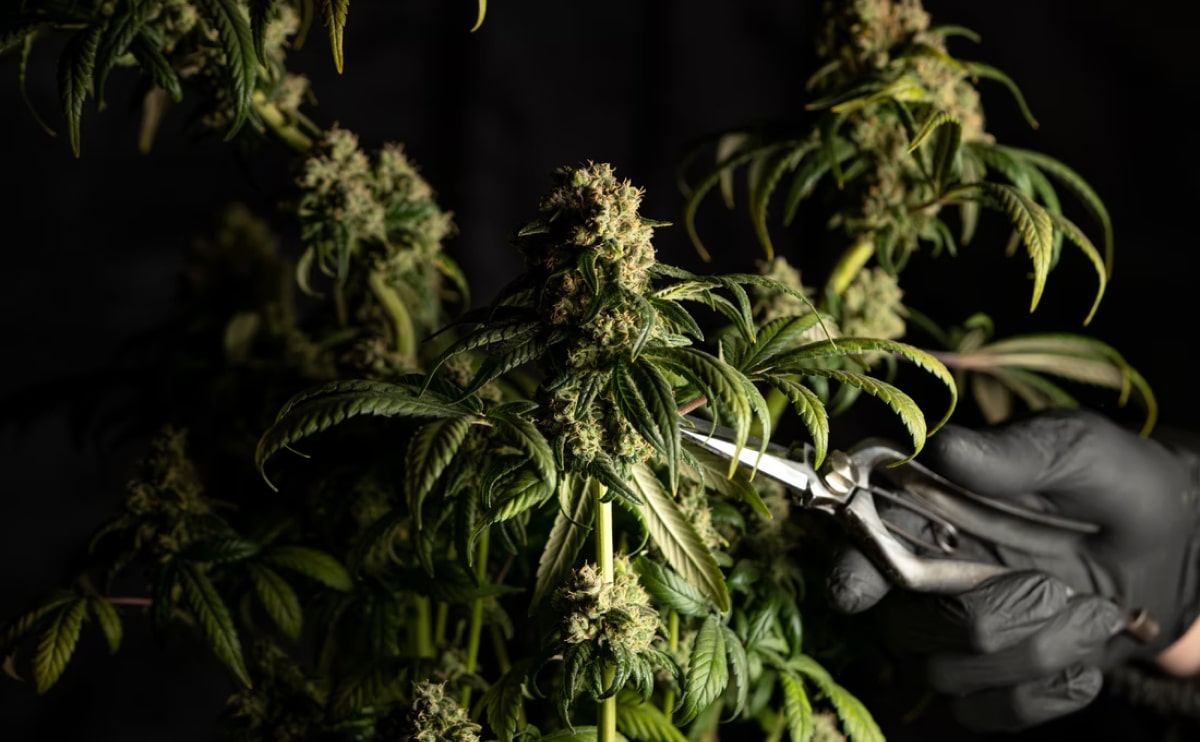What is pruning and topping?
Eliminating the plant’s central stalk, or “topping,” encourages a bushier, healthier, and more productive growth pattern in weed plants. Pruning is the process of removing branches and leaves from a marijuana plant that are either diseased or will not receive enough light to support bud development.
Pruning marijuana 101
How do I prune my marijuana plants?
While the concept of pruning marijuana plants is not complex, it does require time, effort, the right equipment, and a keen eye. Keep reading for our best advice on how to prune marijuana for a bumper harvest of high-quality bud.
Prune with a clean, sharp pair of pruning shears; no other equipment is needed. Professional gardeners often have more than one set of shears at their disposal, with varying sizes for cutting at various stages of development.
To avoid transmitting disease to your plant, disinfect the shears before each use. Until the wound heals, the area where the plant was pruned may be susceptible to further damage. Only with razor-sharp shears can you make clean cuts quickly without damaging the plant.
After cleaning and sharpening your pruning shears, you can get started.
1. Stalk topping, also known as primary pruning
One of the most common forms of pruning used in cannabis cultivation is the removal of the plant’s central stalk, as explained by Robert Connell Clarke, an expert in the field. When the final product is to be a specific height, the central stalk’s tip is cut off. This pruning promotes a low-growing, spreading shrub rather than a lanky, towering one.
After the main stalk is cut off, two new, outward-growing limbs develop from axial branches that sprout from the cut area. This technique, also known as “topping,” is revolutionary because it drastically alters the course of the plant’s development.
2. The elimination of large leaves and branches
Creating more open space by removing larger branches and leaves can immediately improve airflow. Also, more of the plant can soak up the sun’s rays. Cut at a 45-degree angle, keeping the cuts as clean and close to the stem as possible. After the major limbs have been cut back, it’s much simpler to focus on the finer points.
3. Making room in the plant’s centre
The strength of the plant’s trunk and uppermost branches is greater than that of its middle branches. You should do some cutting back to make some room in the middle.
4. Lollipopping
Typically stunted and circling the plant’s lower regions are very short, thin branches. The plant is able to redirect energy and nutrients into the upper stems, leaves, and buds when entire limbs are cut off. Since more air can reach the lower parts of the plant, mildew is less likely to form when it’s grown indoors. First and foremost, nutrients and hormones that promote growth are sent upward, to the buds that have the best chance of survival. This approach is also known informally as the lollipop method or lollipopping. The plant takes on the appearance of a lollipop, being full and bushy at the top but becoming lean and sparse as it descends.
5. Taking away dead leaves and stubby buds
Surgically excise any areas of discoloured or otherwise suspicious tissue. Cut off any leaves that have developed new shoots at their base. Remove any buds that will be overly shady once the canopy matures. These buds are in an unfavourable location, which means they may not get enough light or nutrients to fully develop.
Topping marijuana 101
Let’s take a look at the topping process now that we know what pruning in detail is. Here’s what you need to do.
1. Verify the state of your plant
Before you go chopping up your plants, make sure they are healthy enough to be topped and will recover properly without too much stress. Unless precautions are taken, the plant may become hermaphroditic and pollinate itself. Topping should not be done after the plant has completed its vegetative growth stage.
2. Put your tools together and clean them up
You’ll need a pair of pruning shears or a razor blade (the sharper, the better), as well as some isopropyl rubbing alcohol to sterilize your tools and prevent the spread of disease to your plant.
3. Find the primary stalk
If you want your plant to bush out properly after being topped, you should cut it back to around the fourth or fifth node and make sure it has a well-established root system. Use your clean shears to trim the main stalk above the fifth node.
4. Make sure to monitor the progress of the plant
It’s important to keep an eye on the plant after you’ve topped it, because doing so causes stress on the plant and can exacerbate existing growth issues. To ensure the plant recovers and continues growing, it is crucial to provide it with ample water and light afterwards. If you want to continue shaping the branches into a bush, top them off by slicing above the second or third node. These tertiary, or secondary, cuts to the side branches are discretionary and should be made based on a number of factors, including the remaining vegetation time, the size of the grow space, and the desired final plant size.






